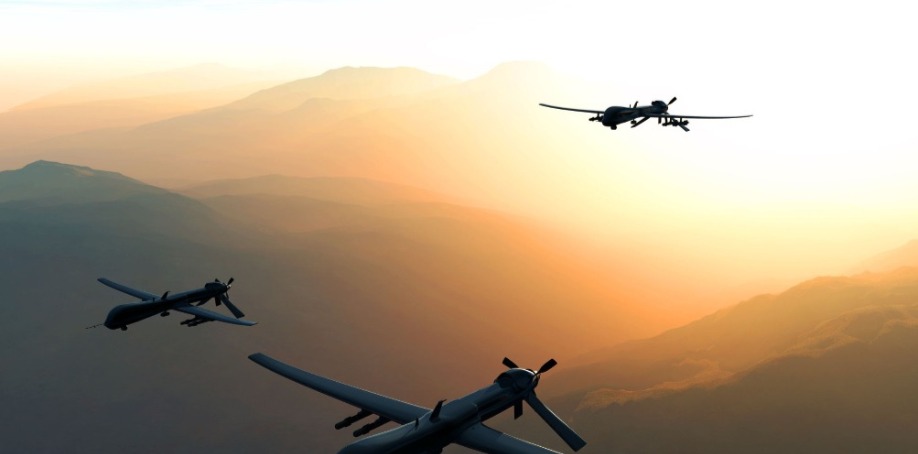
Supplying pro AV to the military can be incredibly lucrative. However, not every integrator knows how to pitch to the Department of Defense.
The military works closely with AV equipment. As editor-at-large for Commercial Integrator D. Craig MacCormackpoints out, that's why many AV companies work with military veterans. Veterans understand the equipment on a deeper level than your average client.
This means integrators need to have a pitch that matches this level of understanding.
Pitching pro AV to the military has a number of steps. First, an integrator needs to have an understanding of how the technology is being used in combat, in training exercises and in military operations.
Once they understand this, it's a matter of pitching the right equipment to fulfill the needs of the client.
The Role of AV Technology in the Military
Military AV equipment serves very different needs than you might find in an office setting or even a hospital.
Video playback is one of the more complex uses of this equipment, as Commercial Integrator reports. In fact, “Military implementations may include 16 simultaneous video playback functionality.”
This means the equipment needs to have the flexibility and power to handle that much playback at once. It also needs to be fast and easy to set up for situations where time is of the essence. Many traditional AV systems cannot meet those needs, so it is important for integrators to understand and pitch the proper kind of equipment from the start.
As for more specific technology, Tara Martin, director of business development for UTC Aerospace Systems, ISR and Space Systems, discusses the importance of tracking sensors in the field. This technology can help reduce instances of friendly fire.
With military technology, lives are often at stake. This is something that integrators need to keep in mind while pitching. That's why the DoD scrutinizers its vendors so meticulously.
But active military aren't the only ones who are benefiting from technology like pro AV.
As VisExperts reports, virtual reality is becoming an important part of training military, as well. This technology could be the key to creating a realistic, but safe, setting for training soldiers.
For this to work, however, there is a need for bandwidth and a video-delivery solution that can scale without miles of cabling. This is something that military professionals will be thinking of now, so it's something that integrators should keep in mind while pitching.

The Military's Current AV Needs: Bandwidth and Scalability
Currently, all branches of the military are in need of infrastructural upgrades to support the capabilities of technologies such as drones and streaming video.
In August, Maj. Gen. David Bassett, the Army's program executive officer for Command, Control, Communications-Tactical, called for greater investment in cloud technologies. Right now, soldiers relying on satellite comms get a 2 mbps signal. This just isn't practical for relaying video.
“To transform the network we're going to need more access points and greater bandwidth and lower latency,” Maj. Gen. Bassett reported at a recent event.
For the Marine Corps, drone technology is making many people's jobs easier. “What we're looking at is … minimal operator burden so [a Marine's] face isn't down in a tablet,” says Capt. Matt Cornachio, a fires project officer with the Warfighting Lab's science and technology division. “It's sort of having the machines do the work for you, so you give them intent and they operate.”
Scalable, low-latency, high-bandwidth infrastructure is key to this kind of technology.
The Air Force is also looking intently into the tactical capabilities of unmanned aircraft. “Flying large UAS beyond visual line of sight in the national airspace will allow the unmanned aircraft industry to demonstrate its true potential for contributing to commercial aviation operation,” says Thomas Swoyer, Jr., president of the Grand Sky Development Co.
“It reduces the cost for operators to test and prove systems and provides the opportunity for real-world demonstrations of how unmanned and manned aircraft can share the skies safely and efficiently.”
Again, relaying that beyond-the-horizon visibility requires an infrastructure that supports clear, high-quality streaming video.
One more potentially impactful application of AV technology? Underwater intel. “The Combat Diver may have a significant amount of essential equipment to carry while conducting missions,” says Danny Gray, products and support director at James Fisher and Sons, a UK-based provider of marine equipment.
“Traditional kit such as the compass and depth gauges not only increases the amount of equipment required, but, more critically, they are of little, or no use in water with very limited visibility, even with auxiliary illumination. This puts the diver at too great a risk of injury or even fatality.”
Visor projectors are being developed to help combat divers navigate and monitor their equipment. But those displays would have to communicate information even deep underwater. This sort of technology is incredibly sophisticated, and needs a powerful network behind it.

Pitching AV Over IP to the Department of Defense
So many integrators are turning to AV over IP because it offers scalable, low-latency, high-bandwidth infrastructure — exactly what each branch of the military needs.
“One of the biggest trends in the professional AV industry is networked AV,” says Guy Campos, editor at AV Magazine. “Distributing audio and video signals over the IT network is an innovative approach that allows for flexible, configurable and scalable installations that can be easily centrally controlled and managed.”
The portability of AV over IP is also a great asset for military applications. AV over IP greatly reduces the amount of cabling and setup necessary. In operations where time is important, the ease of transportation is critical.
HB Communications notes that while security in particular is a concern with AV over IP, newer technology has made these concerns less valid. “Some networked AV models now have built-in encryption capabilities, with AV signals passing through dedicated encoders and received by decoders connected to the display or speaker,” they point out.
Having proper security is something that many military implementers will care about. As much of the information transported is confidential, the ability to secure networked AV is critical.
Finally, Christy Ricketts at Contemporary Research notes that AV over IP is cost-effective. This can be the final selling point on a system that is powerful and easy to use.
When pitching networked AV to the military, be sure to bring up all of the ways that it can make their job easier, and keep their people on the ground safe.
Images by: belchonock/©123RF.com, boscorelli/©123RF.com, Ivan Cholakov/©123RF.com


